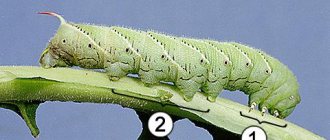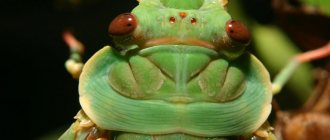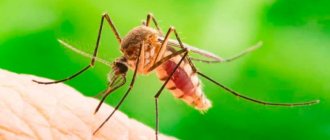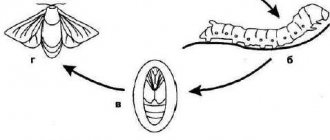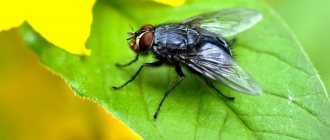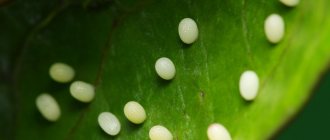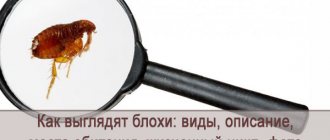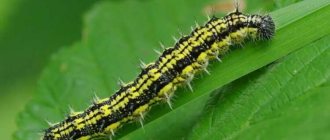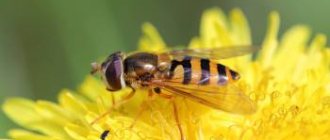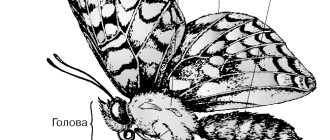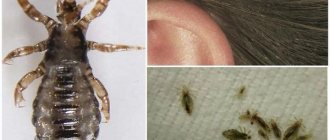Not all parents like it when children catch butterflies to pierce them with a pin and attach them to cardboard for collection. Such a “herbarium” makes one think: who grows up in a family - a future entomologist or a little sadist?
Keeping a butterfly as a pet is another matter. Why not? We will tell you how to care for a butterfly brought from the street and how to grow it from a caterpillar. And since the lifespan of these insects is short-lived, the deceased pet can be immortalized under glass with a clear conscience.
And yet, is it worth getting a butterfly?
Butterfly world
Representatives of the order Lepidoptera, which includes butterflies according to the biological hierarchy, can be found on almost all continents and in any climate, except the coldest - Antarctica. They love to fly in flowering meadows in mid-latitudes and among the ice of Greenland, on the islands of the Pacific Ocean and in the highlands of the Himalayas.
Butterflies belong to the most numerous and ancient order, which has more than 158 thousand species. Lepidoptera are cold-blooded (ectothermic) insects that can regulate their own body temperature by taking heat from the outside or releasing it into the environment. Because of this, most of their species prefer to live in tropical climates.
A butterfly is called an insect with complete metamorphosis, i.e. its development goes through all stages: eggs, larvae or caterpillars to pupa and adult (imago). Also, for most lepidopterans, a characteristic feature of their body structure is the presence of a mouthparts with a proboscis, through which they drink nectar. They also have a wide variety of wing shapes and sizes: from 2 mm to 28 cm.
Where the butterfly lives, what it eats and its lifespan most often depend on the climate zone: these insects prefer a hot and humid natural climate, that is, the tropics. The greatest diversity of species lives in the forests of South America (40 thousand), in South and Southeast Asia (more than 10 thousand), where there are ideal conditions for the number of sunny days, high humidity and the possibility of camouflage among dense foliage.
Wings.
Typical butterflies have two pairs of well-developed wings, densely covered with hairs and scales derived from them. However, the structure of the wings varies greatly: they can be almost completely absent (due to evolutionary degeneration), represent wide planes or narrow, almost linear structures. Accordingly, the ability of different butterflies to fly varies. In a number of forms, for example, some wavefish, the wings are reduced only in females, while males remain good flyers. Species with both winged and wingless females are known. On the other hand, there are species in which the wings are apparently normally developed, but are non-functional as flight appendages; An example of this is the silkworm, which produces commercial silk: its males and females are winged, but are not capable of flying. Probably the best developed flying apparatus is in the hawk moth family. Their rather narrow wings beat with such frequency that the butterflies not only develop high speeds, but are also capable, like hummingbirds, of hovering in the air and even flying backwards.
In a number of moths, for example some hawkmoths and all glass moths, hairs and scales on the plane of the wings are practically absent, but this does not affect the ability to fly. The wings of these species are narrow, and they do not require additional mechanical support created by the scaly cover. In other cases, the system of veins in the wings is significantly reduced, and the supporting function is performed by scales located in a special way on their surface. Some very small butterflies have wings so narrow that they probably could not provide lift if not for the long hairs bordering them. They are located so densely that they increase the area of bearing surfaces in contact with air.
The most clear structural difference between nocturnal butterflies and diurnal ones is associated with the mechanisms of coupling of the front and hind wings, i.e. synchronizing their movements in flight. Moths have two of these mechanisms. One of them is called bridle. The frenulum is a subulate-shaped projection extending from the underside of the anterior edge of the hind wing at its base. It is inserted into the so-called retinaculum on the forewing, which in males usually resembles a pocket and is located below at the anterior edge of the wing on the costal vein, and in females it looks like a tuft of setae or stiff hairs at the base of the medial vein. The second mechanism is provided by a narrow blade clinging to the rear wing on the inner edge of the front wing at its base. This structure, called yugum, is known only in a very few of the more primitive forms. In diurnal butterflies, traction is due to a growth on the hind wings that does not correspond to the frenulum. However, there are several known exceptions. One primitive day butterfly retains the frenulum, and some nocturnal butterflies have wings linked together, like day butterflies.
Appearance of butterflies, where they live and what they eat
Among invertebrates, butterflies have the most complex body structure and the most beautiful appearance. The insect's body consists of an abdomen, chest, head with antennae and proboscis, 3 pairs of legs and two pairs of beautiful wings, which contain all the beauty of nature, various patterns and colors.
The butterfly has a total of 4 wings, each of which is covered with scales ranging from 100 thousand to 1 million in larger tropical species. They are: pigment (containing a bright coloring matter) and optical (reflecting and refracting light).
Butterflies feed exclusively on liquids that they can drink through their proboscis: flower nectar, tree sap, pollen, dung and rotting fruit. They can suck moisture from puddles or from leaves, and sometimes sit on a person in search of a drink, attracted by the smell of sweat, which contains salts and minerals necessary for their life.
Life expectancy also depends on where the butterfly lives, its type and size: smaller ones can live only a few days, and large insects living in the tropics can live up to several months. Representatives of middle latitudes live on average 3-4 weeks, and representatives of northern latitudes live up to 2 years.
Dangers Lurking
Many Lepidoptera survive winter frosts at the pupal stage. A durable cocoon provides additional protection from pathogens and piercing winds. Some butterflies are forced to migrate, which is why they go to warm countries, where they manage to protect themselves from the cold. But there are also species of lepidoptera that try to climb deeper into the leaves that have fallen from trees in order to plunge into suspended animation. For example:
Global warming negatively affects not only humans, but also wildlife. In the middle of winter, sudden thaws and air temperatures rising to 12 °C cannot be ruled out. For this reason, many animals and insects wake up from winter sleep ahead of time.
Even in January you can see a bright peacock butterfly carelessly fluttering out of its hiding place. But such an awakening will be fatal for her. The butterfly will use up its energy reserve and will not be able to quickly find a suitable place to hibernate again. The main danger is due to the fact that in a damp place lepidopterans are affected by fungal infections that are fatal to them.
Not all butterflies manage to survive the winter. There are several reasons for the premature death of lepidoptera:
If the butterfly was able to survive the cold, then immediately after waking up it will begin searching for any source of food. The most valuable are dandelions and primroses. Lepidoptera flutter over flowers, collecting nectar.
Butterflies also look for sap on tree bark. Males try to occupy the best sunny site in order to wait for the overwintered females to appear for mating, which will allow them to begin a new life cycle.
Source
Life cycle
The life cycle of lepidoptera begins with the laying of eggs by adult insects directly on the leaves or branches of plants, where the butterfly (or rather its egg) lives in the first stage of its development, which lasts 8-15 days. The color, number and shape of eggs depend on the species; there can be up to 1 thousand eggs in total, most of which do not survive to adulthood. Butterfly species that live in temperate climates typically lay their eggs in late fall or early winter and remain dormant until spring.
The next stage, caterpillars, also takes place on the plants on which they feed. According to their lifestyle, they are divided into those who openly crawl over leaves and branches in search of food, and those that hide under special covers made independently using silky threads and parts of leaves. Some caterpillars are bright in color, demonstrating their inedibility, while others disguise themselves as green parts of plants.
The duration of the life cycle depends on the temperature and climate where butterflies live in nature: in northern species, caterpillars can hibernate (diapause) until next spring, and their development cycle can last up to 7-10 years.
The most stationary stage - the pupa - looks like a light-colored cylinder; as it matures, the color changes to that which is characteristic of this species. Pupae can either attach to leaves or lie on the ground without feeding for a long time.
An adult butterfly (imago) crawls out of the pupa, pushing off the shell with its paws, and males are born earlier than females. After emerging from the shell, its wings gradually straighten and harden, and a characteristic coloring also appears.
Hairs, glands and other larval structures.
Caterpillars of some species are armed with stinging hairs or bristles. On their sharp peaks, ducts of poisonous skin glands open, the secretion of which, when injected into the enemy’s body, causes irritation of his integument. Special glands in larvae from various families moisten the body surface with a liquid that most likely has a repellent effect on the main predators dangerous to these species. Some caterpillars, if disturbed, begin to squirm violently, others curl up into a tight ball or pretend to be dead. In many cases, at the moment of danger, they fall from the branches like a stone and hang on the silk threads released during the fall. To get back, the caterpillar climbs the silk, moving through it with its oral appendages and front thoracic legs. In the larvae of many hawkmoths, the eighth abdominal segment bears large outgrowths in the form of horns on the back. The disturbed caterpillar with a sharp movement directs them towards the enemy. In many larvae, long, more or less spiny hairs, which densely cover the body, serve as effective protection against parasites and predators.
Where do butterflies spend the winter?
Most butterfly species live only through the summer, laying eggs for the next generation to emerge, and then the insects die. But among them there are also long-livers.
Where do butterflies live in winter and how do they hide from the cold? The answer depends on the species of Lepidoptera. Thus, some butterflies living in Russia (urticaria, lemongrass, burdock) hibernate for the winter, climbing into crevices or hollows of trees and wrapping themselves in their wings. Many climb closer to warm human habitation and fall asleep there.
But there are also migrant butterflies, which, like birds, gather in flocks of up to 1 million individuals, and in the fall they fly to warm southern countries, sometimes located 1000 km from their homeland. Scientists have been struggling with the mystery of how these creatures find their way for decades. After all, having a more primitive nervous system, they are not able to navigate by the sun.
Rules for keeping at home
Butterflies prefer to winter exclusively in a cool place . Otherwise, they may not survive until spring. This is due to the fact that during hibernation, lepidoptera's metabolism accelerates, which is why the aging process proceeds much faster. Peacock butterflies are common in Russia, preferring to overwinter in hollow trees, attics of houses, and also in basements. Lepidoptera begin to look for a suitable secluded place in the fall, when they sense the approaching cold weather.
If the butterfly is grown in an apartment, then it must be euthanized artificially. Such insects fall asleep at temperatures below 15 degrees. The butterfly should be carefully placed in a dry jar or box with small holes for oxygen access. But before this, the insect needs to be well fed. The jar/box with the butterfly should be left until spring on a glazed balcony, where it is cool and dry.
It is necessary to exclude the possibility of direct sunlight hitting the moth’s “house”. Conditions are considered ideal when the air temperature in the room does not rise above +5 degrees. If the balcony is not glazed, then it is better to place the jar with lepidoptera on the bottom shelf in the refrigerator.
Butterflies are increasingly grown at home, as they have an attractive appearance and are easy to care for. But in order for an exotic insect to live in an apartment or house for as long as possible, you need to create favorable conditions for it, ensure proper feeding and a good wintering .
Interesting Facts
The origin of the word “butterfly” in Orthodox countries comes from the words “old woman” or “grandmother”, because Since ancient times, people have represented these insects as the souls of dead people. This belief still exists to this day in villages and villages in the Russian outback.
The largest butterfly is the South American tropical moth or tisania Agrippina, its wingspan is 28 cm; in Russia, the Maaka swallowtail (up to 13.5 cm). The smallest is the baby moth, living on the Canary Islands; its size barely reaches 2-4 mm.
A butterfly, flying from flower to flower, can cover up to 10 km in 1 hour, thus moving to the place where it will lay eggs.
One of the most amazing butterflies, Greta, amazes with its transparent wings, through which the entire surrounding world is visible.
Dangers Lurking
Many Lepidoptera survive winter frosts at the pupal stage. A durable cocoon provides additional protection from pathogens and piercing winds. Some butterflies are forced to migrate, which is why they go to warm countries, where they manage to protect themselves from the cold. But there are also species of lepidoptera that try to climb deeper into the leaves that have fallen from trees in order to plunge into suspended animation. For example:
Global warming negatively affects not only humans, but also wildlife. In the middle of winter, sudden thaws and air temperatures rising to 12 °C cannot be ruled out. For this reason, many animals and insects wake up from winter sleep ahead of time.
Even in January you can see a bright peacock butterfly carelessly fluttering out of its hiding place. But such an awakening will be fatal for her. The butterfly will use up its energy reserve and will not be able to quickly find a suitable place to hibernate again. The main danger is due to the fact that in a damp place lepidopterans are affected by fungal infections that are fatal to them.
Not all butterflies manage to survive the winter. There are several reasons for the premature death of lepidoptera:
If the butterfly was able to survive the cold, then immediately after waking up it will begin searching for any source of food. The most valuable are dandelions and primroses. Lepidoptera flutter over flowers, collecting nectar.
Butterflies also look for sap on tree bark. Males try to occupy the best sunny site in order to wait for the overwintered females to appear for mating, which will allow them to begin a new life cycle.
Source
